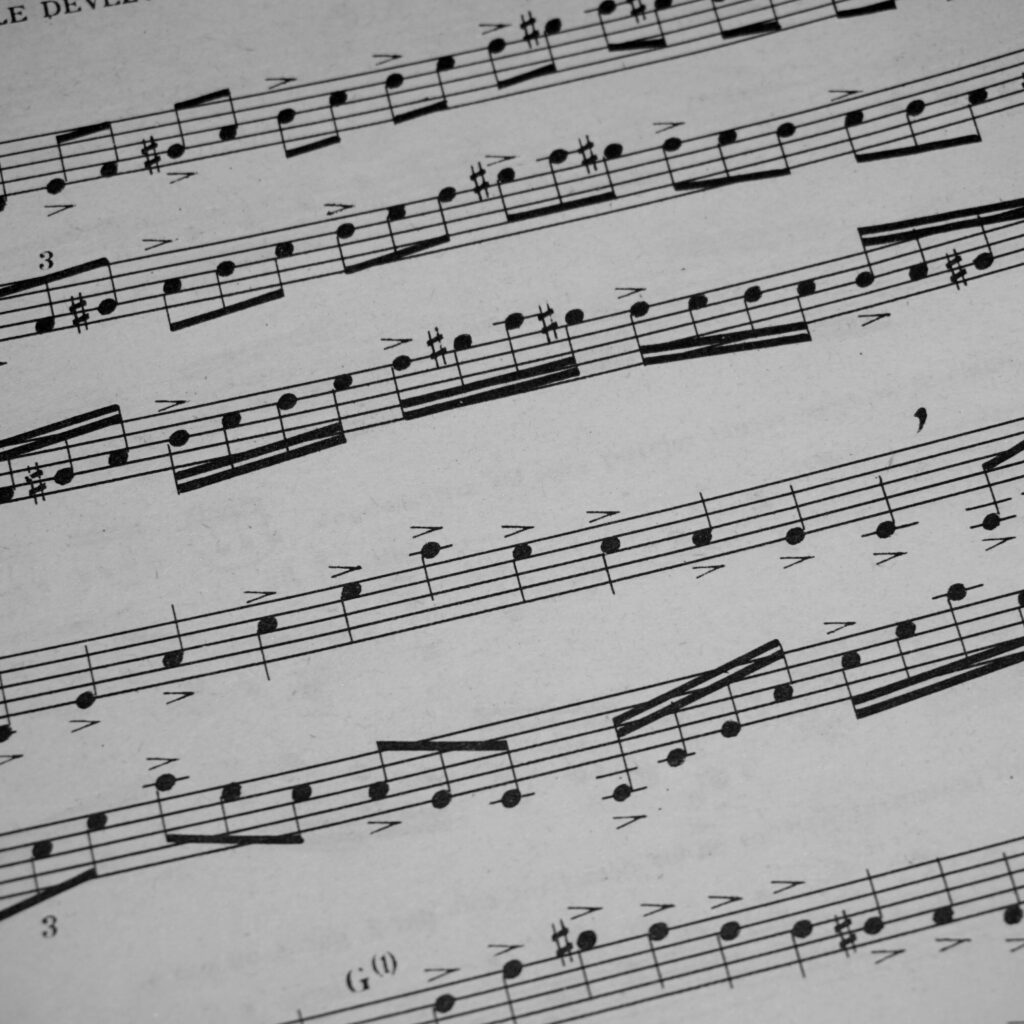If you’ve been wondering “what does M mean in piano?”, you’re not alone. This symbol often perplexes beginners and experienced players alike. In this article, we’ll demystify the “M” symbol and walk you through its meaning and usage in a step-by-step manner.

Table of Contents
Basic Definition
The “M” symbol in piano sheet music primarily represents the term “Mezzo,” which hails from the Italian word for “medium.” It is often a part of a two-letter combination, guiding you on how loud or soft the music should be played. For instance:
“Mf” stands for “Mezzo-forte,” instructing you to play at a medium-loud volume.
“Mp” stands for “Mezzo-piano,” directing you to perform at a medium-soft volume.
This notation acts as a guidepost, helping you navigate the emotional and tonal landscape of a piece.
How to Use the ‘M’ Symbol
Navigating through the nuances of piano sheet music requires a keen eye for detail. One such detail, the “M” symbol, can provide valuable direction on how to convey a particular emotional tone or volume in your performance. Below are expanded insights on how to handle this symbol.
Identify the Symbol
Scour the Sheet Music: Before you even begin to play, it’s beneficial to give your sheet music a thorough look. Your aim is to spot the “M” symbol, which usually appears above the staff or beside particular notes.
Annotate if Necessary: To keep this symbol in your awareness, you might want to annotate it. Use a pencil to circle the “M” symbol or any accompanying letters, making them more noticeable for your first read-through or practice sessions. This simple step can serve as a valuable reminder when you’re engrossed in playing.
Understand the Context
Consult Other Musical Elements: The context in which the “M” symbol appears is often just as crucial as the symbol itself. Are there any crescendos, tempo changes, or key modulations nearby? These elements can offer further clues about how to interpret the “M” symbol.
Practice the Surrounding Passages: Before you perform the piece in its entirety, try practicing the sections around the “M” symbol separately. This isolated practice will give you a clearer understanding of what role the “M” symbol plays in that particular part of the music.
Execute Properly
Initial Trials: Once you’ve located and understood the “M” symbol, begin by practicing that specific passage at a slower pace. Focus specifically on adhering to the volume level indicated—be it medium-loud (“Mf”) or medium-soft (“Mp”).
Feel the Keys: When the symbol calls for medium volume, your touch on the piano keys should be balanced. There’s no need to exert excessive force or be overly gentle. It’s all about achieving that ‘middle ground’ of pressure on the keys.
Listen and Adjust: As you play, keep your ears open. If you’re not hitting the desired volume, make real-time adjustments. Even experienced pianists occasionally need to recalibrate their touch to suit specific notational requirements.
Examples in Sheet Music
For instance, you may encounter a passage where the symbol “Mf” appears just before a series of quarter notes. This notation instructs you to play these specific notes at a medium-loud volume.
Another example could be a piece that starts with “Mp,” setting a mood of soft reflection or perhaps subdued melancholy. In such cases, you would aim to strike the keys softly but not too softly, creating a medium-soft sound.
Common Mistakes and How to Avoid Them
Understanding the “M” symbol might seem straightforward, but common errors can significantly impact your performance. Here are some pitfalls and how to sidestep them:
Overlooking the Symbol: Make it a habit to scan the sheet music before you start playing. This will ensure you’re prepared for any “M” symbols that appear.
Misinterpretation: The “M” symbol is often accompanied by another letter. Be sure you understand the pair’s meaning—like “Mf” for medium-loud and “Mp” for medium-soft—so that you don’t play too loudly or too softly.
Inconsistency: Once you understand what the “M” symbol means, it’s crucial to maintain that volume level for all the relevant passages. Sudden, unintentional volume changes can disrupt the flow and emotional impact of the piece.
For more articles on piano questions, click here: Piano Questions: Your Ultimate Guide to Understanding All About Pianos
Conclusion: What Does M Mean in Piano?
Mastering the intricacies of piano sheet music is a journey that involves much more than simply hitting the right notes. Symbols like “M” for Mezzo serve as vital signposts, guiding you toward the emotional and dynamic essence of a composition.
By taking the time to identify these symbols, understand their contextual relevance, and execute them appropriately, you elevate your performance from mere notes on a page to a rich, expressive musical experience.
So the next time you sit down at the piano with a sheet of music in front of you, pay close attention to these seemingly small yet profoundly impactful symbols. They can make all the difference in transforming your performance into a true rendition of the composer’s intent.